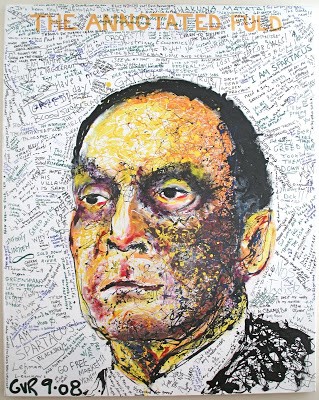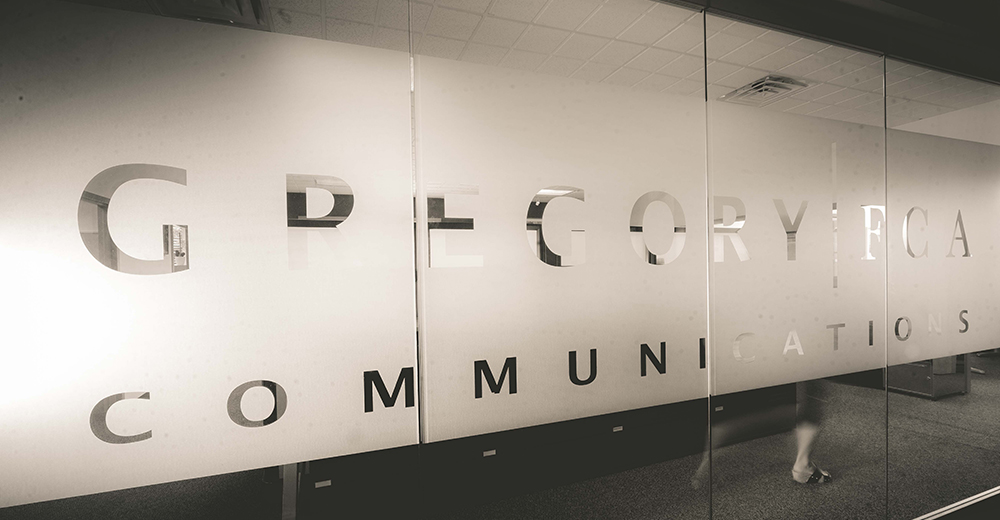When the 2008 financial crisis started to unfold, I had just had my second child and secured my first mortgage. I was an employee at the agency I currently co-own today, and my wife had temporarily left her job to tend to our two boys, both under the age of 3. It was the income I was earning that paid the bills, and I didn’t want to think about what I’d have to do if the situation got messier.
It was a scary time.
I was far from the only person losing sleep. That fall, Geoffrey Raymond, an artist known to do street paintings, created a portrait of then Lehman Brothers CEO Dick Fuld that depicted public sentiment toward Wall Street at the time.
CNBC and countless other financial news networks covered the artist’s display of what was called “The Annotated Fuld” behind the Goldman Sachs building on Wall Street. The messages and inscriptions left on the canvas told the story of both those who were clinging to the “old Wall Street,” and those who were ready to vilify and pour kerosene on the fire.
The backlash set the stage for the Occupy Wall Street movement and similar protests. I knew we had entered a different age for the financial sector then. In fact, the Edelman Industry trust barometer has shown the financial industry has remained at or near the bottom of consumers’ trust compared to other industries.

“The Annotated Fuld” by Geoffrey Raymond
The financial crisis and the public disruption left in its path ended up serving as a pivotal moment for our financial PR agency. We didn’t know it at the time, but the implosion of the markets, the housing market collapse and the general business malaise actually made financial issues front page news. Finance became pop culture. Just take a look at how many financial TV personalities made the leap into mainstream news – Erin Burnett of CNN (formerly of CNBC) is one good example, Eric Bolling (formerly a Fast Money trader, became a fixture on Fox News) is another. Fox Business Network, a news outlet created to exclusively cover the finance and business worlds, also made its debut around this time to further meet the growing public appetite for financial news.
From a career and business standpoint, the financial crisis tested our resolve and commitment to the financial industry. Less than six years after making the sector a focal point for our business, we had broken into the top 50 of financial PR firms. We were faced with the real prospect of seeing a significant runoff in our business, as many financial services firms would retrench in their marketing.
Then, something funny happened. The slice of the industry we represented – the independent “off Wall Street” investment advisory firms, the community banks and the upstart ETF issuers – saw their opening and decided that they couldn’t afford to NOT promote themselves. They either stuck with their commitments to using our services or, in many cases, found room in their shrinking budgets to pay for new PR campaigns. We were aligned nicely for this pocket of opportunity, and less than three years later, we had broken into the top 20 of the financial PR firm rankings. Today, we sit at number eight on that list.
On a personal note, any doubt about my desire to become a business owner went away after I saw the carnage in the industry. People lost jobs, not because of poor performance or incompetence, but because they didn’t control their own destiny. Not only did I want to be a decision-maker in my own employment, but I also wanted to advocate for others’. Our agency never laid off personnel during this time, but we had to buckle down and over-service our clients to ensure that possibility didn’t turn into reality.
Our agency even doubled down on technology-savvy talent, which paid off as it more closely aligned us with the growing role of digital marketing, and we became populated with digital natives and professionals fluent in Facebook, Twitter and the likes.
As for what the next decade will hold, we’re still working to repair the reputational damage left from the financial crisis by bridging the trust gap between our clients and their consumers, prospects and key stakeholders in this post-renaissance period of financial communication. With a focus on the future, we remain aligned with the growing entrepreneurial end of the financial industry, and we’re committed to staffing our business with innovative minds, both relatively new to the workforce and those seasoned by these experiences.
